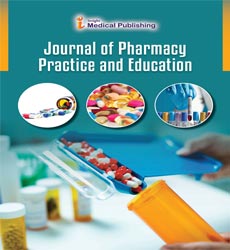Fingerprinting of Natural Product by Eastern Blotting Using Monoclonal Antibodies
Yukihiro Shoyama*
Department of Pharmaceutical Sciences, Nagasaki International University, Nagasaki, Japan
- *Corresponding Author:
- Shoyama Y
Department of Pharmaceutical Sciences
Nagasaki International University
Nagasaki, Japan
E-mail: shoyama@niu.ac.jp
Received Date: July 13, 2020; Accepted Date: July 28, 2020; Published Date: August 04, 2020
Citation: Shoyama Y (2020) Fingerprinting of Natural Product by Eastern Blotting Using Monoclonal Antibodies. J Pharma Prac Edu Vol.3 No.3:33
Introduction
In the recent rapid development of the molecular biosciences and their biotechnological applications, immunoassay systems using Monoclonal Antibody (MAb) against drugs and small molecular weight bioactive compounds have become an important tool for studies on receptor binding analysis, enzyme assay, and quantitative and/or qualitative analytical techniques in animals or plants; owing to their specific affinity. Previously we prepared various kinds of MAb against natural products like forskolin, solamargine, crocin, marihuana compound, opium alkaloids, ginsenosides, berberine, sennosides, paeoniflorin, glycyrrhizin, ginkgolic acid, aconitine alkaloid, baicalin, and so on, and developed individual competitive Enzyme-Linked Immunosorbent Assay (ELISA) as a high sensitive, specific, and simple methodology.
Western blotting is widely used as an immunostaining technique to detect high-molecular compounds like peptides and proteins based upon an antigen-antibody reaction. However, low-weight molecular compounds had not been previously analyzed by western blotting. We succeeded the blotted staining of solasodine glycoside on PVDF membrane using MAb after developed and separated solasodine glycosides on TLC and called as new-western blotting [1]. From this evidence, we applied this new methodology to licorice glycoside, glycyrrhizin, and named it as eastern blotting following ginsenosides and saikosaponin, and so on. In this paper, we introduce the fingerprint of a steroidal alkaloid glycoside, solasodine glycoside and ginseng saponin, ginsenosides by eastern blotting using MAbs.
Preparation of Anti-Solamargine Mab
A hybridism producing MAb reactive to solamargine was obtained by the general procedure in our laboratory and classified into IgG2b which had k light chains. The reactivity of IgG type MAb, SMG-BD9, was tested by varying antibody concentration and by performing a dilution curve. The antibody concentration was selected for competitive ELISA. The MAb following competition was bound to polystyrene microtiter plates precoated with solamargine HSA. Under these conditions, the full measuring range of the assay extended from 20 to 400 ng/mL. Anti-ginsenoside Rb1 and Rg1 were also prepared by the same ways in our laboratory.
Solasodine glycosides were developed on a TLC plate. The TLC plate was covered with the PVDF membrane and blotted by short heating. The blotted PVDF membrane was dipped in water containing NaIO4 under stirring at room temperature for 1 hr. After washing with water, a carbonate buffer containing BSA was added and stirred at room temperature for 3 hr. The PVDF membrane was washed twice with phosphate buffer for 5 min, and then washed with water. The PVDF membrane was immersed in anti-solamargine MAb, stirred at room temperature for 1 hr. After washing the PVDF membrane twice with phosphate buffer and water, a 1000-fold dilution [2], of peroxidase-labeled goat anti-mouse IgG in phosphate buffer (pH 7.2) was added and stirred at room temperature for 1 hr. The PVDF membrane was washed twice with phosphate buffer and water, then exposed to 4-choloro-1-naphthol (1 mg/mL)-H2O2 (0.03%) in phosphate buffer (pH 7.2), and eastern blotting was stopped by washing with water. The immunostained PVDF membrane was allowed to dry.
The natural resources of adrenocortical hormones and sex hormones, which are mainly obtained from dysgenic, are becoming rare. The most important feature of solasodine is that it can be converted to dehydropregnenolone. Solasodine is found with a series of sugar residues attached to the oxygen at the C-3 position. By far the most common forms are the triglycosides, solamargine being predominant [3]. Therefore, the steroidal alkaloid glycosides of the solasodine type like solamargine have become important as a starting material for the production of steroidal hormones in the pharmaceutical and medicinal areas. Rapid, simple, highly sensitive, and reproducible assay systems are required for a large number of plants, and a limited small amount of samples. In order to select the strain of higher yielding steroidal alkaloid glycosides in the resources of Solanum species we prepared an anti-solamargine MAb which was unique having a wide cross-reactivity.
References
- Ruhnke GW, Wilson SR, Akamatsu T, Kinoue T, Takashima Y, et al. (2000) Ethical decision making and patient autonomy: A comparison of physicians and patients in Japan and the United States. Chest 118: 1172-1182.
- Tanida N (1994) Japanese attitudes towards truth disclosure in cancer. Scand J Soc Med 22: 50-57.
- Wallace PR (2001) Improving palliative care through effective communication. International Journal of Palliative Nursing 7(2), 86-90.
Open Access Journals
- Aquaculture & Veterinary Science
- Chemistry & Chemical Sciences
- Clinical Sciences
- Engineering
- General Science
- Genetics & Molecular Biology
- Health Care & Nursing
- Immunology & Microbiology
- Materials Science
- Mathematics & Physics
- Medical Sciences
- Neurology & Psychiatry
- Oncology & Cancer Science
- Pharmaceutical Sciences
